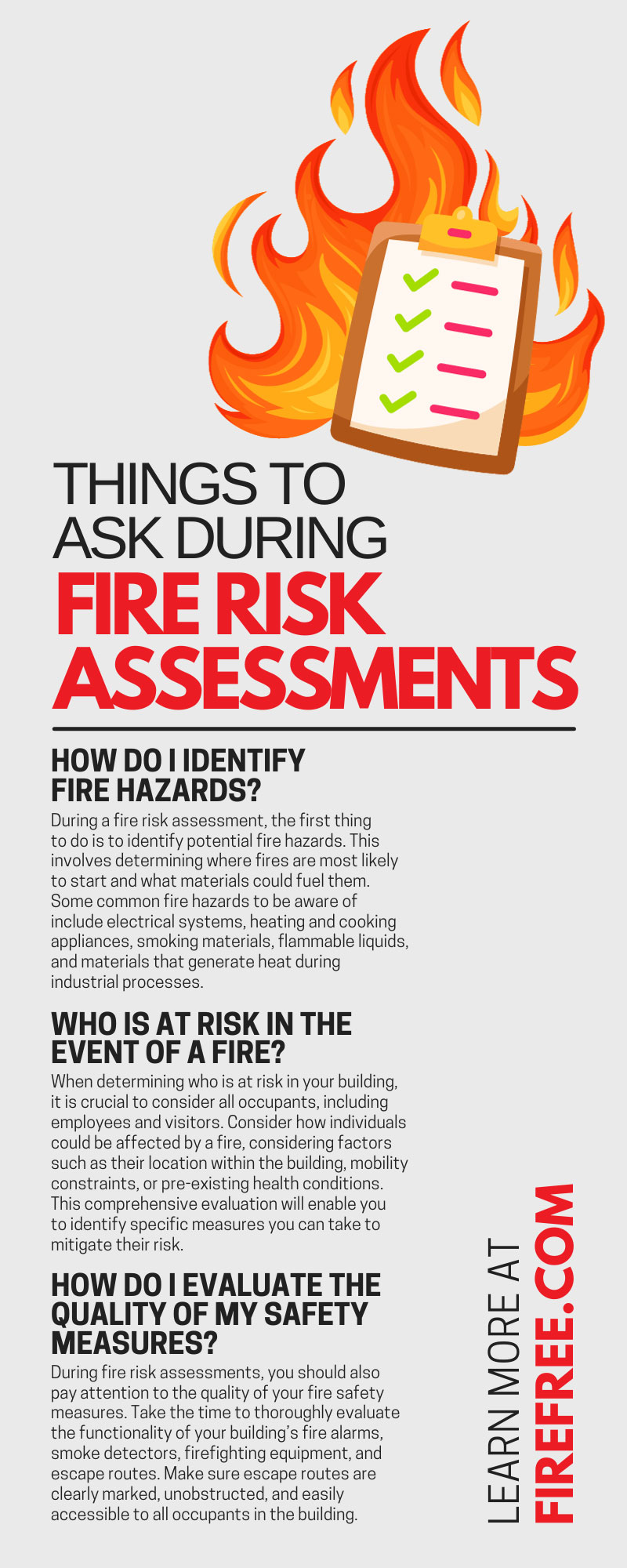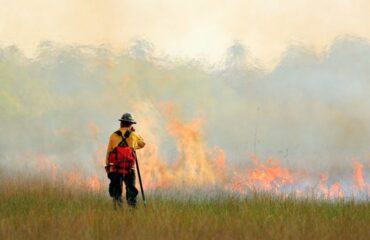
As a building owner, one of your highest priorities should be the safety of your occupants. One way to ensure that safety is by conducting regular fire risk assessments. Keep reading to explore the things to ask during fire risk assessments to promote a productive assessment process. From what a fire risk assessment is and why it is crucial for any building to identifying hazards, you will learn everything you need to know about completing a successful assessment.
What Is a Fire Risk Assessment?
A fire risk assessment is a comprehensive and methodical evaluation of a building, its structure, and the daily activities it houses. This process aims to identify and analyze potential fire hazards and risks, considering factors such as the building’s layout, materials used, electrical systems, and human behavior.
This assessment’s primary purpose is to determine the likelihood of a fire occurring and minimize that risk through the implementation of proactive measures. By identifying potential fire risks, such as faulty wiring or improper storage of flammable materials, you can then take the necessary actions to eliminate or mitigate those risks. By clearly noting escape routes, emergency exits, and fire suppression systems, the assessment helps you create a safer environment for everyone within the building.
Additionally, a fire risk assessment establishes efficient procedures for responding to and fighting fires, should they occur. This includes delineating roles and responsibilities, implementing fire safety training programs, and conducting regular drills to ensure that occupants are well-prepared for an emergency.
Why Does Your Building Need a Fire Risk Assessment?
Aside from being a legal requirement for many commercial buildings, a thorough fire risk assessment is necessary to ensure the safety and well-being of everyone involved. By conducting meticulous risk assessments, you can identify and remedy potential fire hazards, minimizing fire occurrences. A well-planned fire risk assessment also plays a crucial role in protecting valuable business assets and ensuring that insurance costs remain manageable. This comprehensive evaluation will guide you in implementing appropriate preventive measures and emergency response procedures, contributing to a safer and more secure working environment.
What Should You Ask During a Fire Risk Assessment?
Now that you understand the basics of risk assessments and why they are crucial to the safety of your building, you should also know what to ask during the process. These questions can help business owners conduct more productive and thorough fire risk assessments to promote the safety of their businesses and facilities.
How Do I Identify Fire Hazards?
During a fire risk assessment, the first thing to do is to identify potential fire hazards. This involves determining where fires are most likely to start and what materials could fuel them. Some common fire hazards to be aware of include electrical systems, heating and cooking appliances, smoking materials, flammable liquids, and materials that generate heat during industrial processes. You can also consider which parts of your building are more at risk and implement various materials to help reinforce them. For example, using intumescent paint for wood on your building’s structural materials or high-risk areas can help prevent flame spread. Identifying these hazards and implementing appropriate controls can prevent fires from starting in your building.
Who Is at Risk in the Event of a Fire?
When determining who is at risk in your building, it is crucial to consider all occupants, including employees and visitors. Consider how individuals could be affected by a fire, considering factors such as their location within the building, mobility constraints, or pre-existing health conditions. This comprehensive evaluation will enable you to identify specific measures you can take to mitigate their risk.
For instance, to ensure the safety of persons with disabilities, it is essential to provide accessible evacuation routes that are well-marked and equipped with necessary aids such as handrails or ramps. Additionally, conduct regular training sessions for employees to ensure they are well-informed about proper fire safety procedures and know how to assist individuals with specific needs during an emergency.
How Do I Evaluate the Quality of My Safety Measures?
During fire risk assessments, you should also pay attention to the quality of your fire safety measures. Take the time to thoroughly evaluate the functionality of your building’s fire alarms, smoke detectors, firefighting equipment, and escape routes. Make sure escape routes are clearly marked, unobstructed, and easily accessible to all occupants in the building. Additionally, it is essential to regularly inspect, test, and maintain firefighting equipment, including fire extinguishers, fire hoses, and sprinkler systems, to ensure their optimal performance in an emergency. By paying attention to these details, you can enhance the overall safety and preparedness of your building.
How Can I Improve Planning?
To provide the highest level of fire safety, regularly updating and refining your fire safety plans is key. Begin by carefully identifying potential hazards and thoroughly evaluating the effectiveness of existing safety measures. After this assessment, you can focus on enhancing your plan to mitigate risks. This may involve considering additional measures, such as installing a state-of-the-art fire alarm system equipped with advanced detection capabilities. Furthermore, routinely update your fire safety policies and procedures to align with the latest industry standards and best practices. By implementing these comprehensive measures, you can significantly enhance the overall fire safety of your premises.
What Additional Training Can I Implement?
Another critical aspect of a thorough fire risk assessment is the implementation of training for building occupants. Developing and carrying out regular fire safety training workshops can ensure that everyone knows how to respond appropriately during a fire emergency. This training can involve familiarizing employees with the building’s fire safety equipment, practicing evacuation drills, and teaching the appropriate actions to take in the event of a fire.
By addressing these specific issues during fire risk assessments, you can ensure a comprehensive evaluation and maintain a safe and secure environment for building occupants. Remember, cultivating a culture of fire safety in your building is an ongoing process, and regular assessments can help you continuously improve your fire safety measures.
Make sure you ask these essential things during your next fire risk assessment to keep your building safe and secure. If you are looking for materials to reinforce your building against fires, visit Firefree Inc. today to learn more about intumescent coatings that can prevent flame spread in your building’s most at-risk areas.

